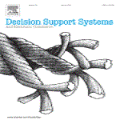The presence of snow and ice on runway surfaces reduces the available tire-pavement friction needed for retardation and directional control and causes potential economic and safety threats for the aviation industry during the winter seasons. To activate appropriate safety procedures, pilots need accurate and timely information on the actual runway surface conditions. In this study, XGBoost is used to create a combined runway assessment system, which includes a classification model to identify slippery conditions and a regression model to predict the level of slipperiness. The models are trained on weather data and runway reports. The runway surface conditions are represented by the tire-pavement friction coefficient, which is estimated from flight sensor data from landing aircrafts. The XGBoost models are combined with SHAP approximations to provide a reliable decision support system for airport operators, which can contribute to safer and more economic operations of airport runways. To evaluate the performance of the prediction models, they are compared to several state-of-the-art runway assessment methods. The XGBoost models identify slippery runway conditions with a ROC AUC of 0.95, predict the friction coefficient with a MAE of 0.0254, and outperforms all the previous methods. The results show the strong abilities of machine learning methods to model complex, physical phenomena with a good accuracy. Published version: https://doi.org/10.1016/j.coldregions.2022.103556.
翻译:跑道表面存在积雪和冰雪,减少了为缓冲和定向控制所需的现有轮胎磨擦,并给航空业带来了冬季时期的潜在经济和安全威胁。为启动适当的安全程序,飞行员需要准确和及时的实际跑道表面条件信息。在本研究中,XGBoost用于建立一个联合跑道评估系统,其中包括一个分类模型,用以确定滑雪条件,以及一个预测滑坡程度的回归模型。模型在天气数据和跑道报告方面进行了培训。跑道表面条件以轮胎磨擦系数为代表,该系数根据着陆飞机的飞行传感器数据估算。XGBoost模型与SHAP近似值相结合,以便为机场运营商提供可靠的决策支持系统,这将有助于机场跑道跑道安全、更经济的运作。在评估预测模型的性能时,它们与若干最先进的跑道评估方法进行了比较。XGBoost模型确定滑润跑道条件,而ROC AUC为0.95,预测摩擦系数以0.0254的模型为基础估算。XGBost模型与ME204的模型相比,并超越了SHAPP准度。APs准度。A/10/10号的模型,所有物理区域方法都展示了以往的学习方法。





